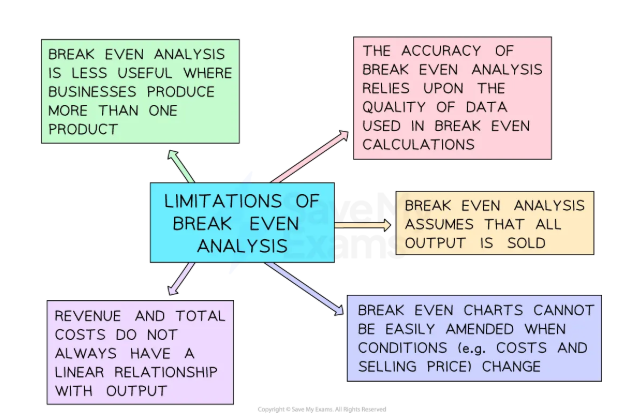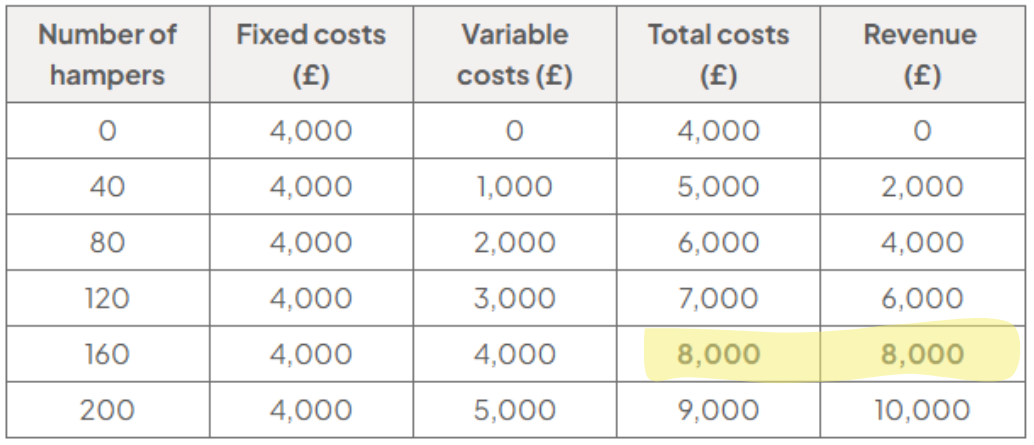Break-Even Calculations (SQA National 5 Business Management): Revision Note
Exam code: X810 75
The break-even concept
Break-even analysis is a financial tool used to determine the number of units a business must sell to reach a point where its revenue equals its costs
It helps businesses understand the minimum level of sales or output they need to achieve in order to cover all costs
This helps business managers make informed decisions about pricing and production volumes
Components of break-even analysis

Information on costs and revenue can be found here
Benefits of break-even analysis
Benefit | Explanation |
|---|---|
Profitability assessment |
|
Cost control |
|
Pricing decisions |
|
Financial planning |
|
Performance monitoring |
|
Decision making |
|
Limitations of break-even analysis

Calculating break-even
The break-even point is the level of output at which total revenue equals total costs
Case Study

Highland Hampers is a small business based in Inverness that produces and sells gift hampers filled with Scottish products such as shortbread, honey, and chutney. The business is considering launching a new “Taste of the Highlands” hamper, priced at £40 each.
Before starting production, the owner, Isla Maclean, decides to carry out a break-even calculation to find out how many hampers must be sold to cover all costs.
Cost and pricing information
Fixed costs: £4,000 per month, including rent, utilities and insurance
Variable cost per hamper: £25, which covers the cost of ingredients, packaging and delivery
Selling price per hamper: £50

As total costs are equal to revenue at 160 units, this is the break-even point
The breakeven formula
The break-even point can also be calculated using a formula
Worked Example
Montrose Burgers has the following financial information for the month of May
| £ |
|---|---|
Raw materials for each burger | 2.10 |
Packaging for each burger | 0.20 |
Fixed costs | 1730 |
Selling price of each burger | 4.95 |
Using the information in the table, calculate the level of output required to break even in May. You are advised to show your workings.
(2)
Step 1: Calculate the variable costs per burger
(1)
Step 2: Substitute the values into the break-even formula
(1)
Step 3: Round up to the nearest unit
653 burgers need to be sold to break even in May
Examiner Tips and Tricks
Always round up the break-even point to the nearest whole unit

Unlock more, it's free!
Did this page help you?